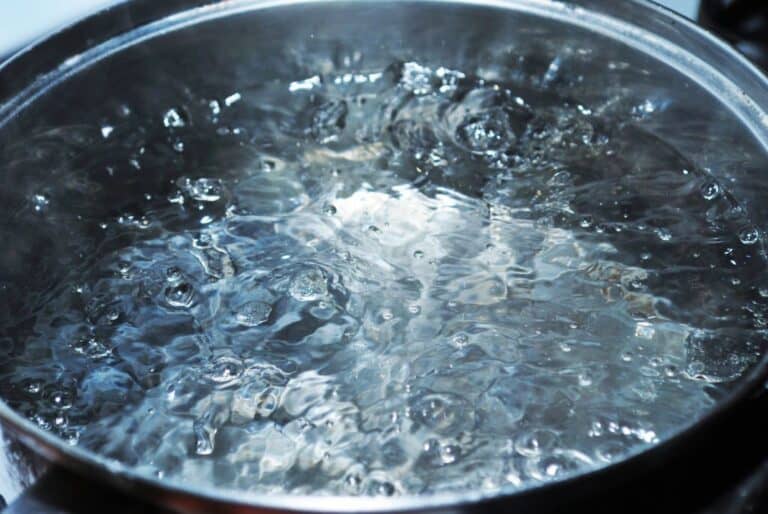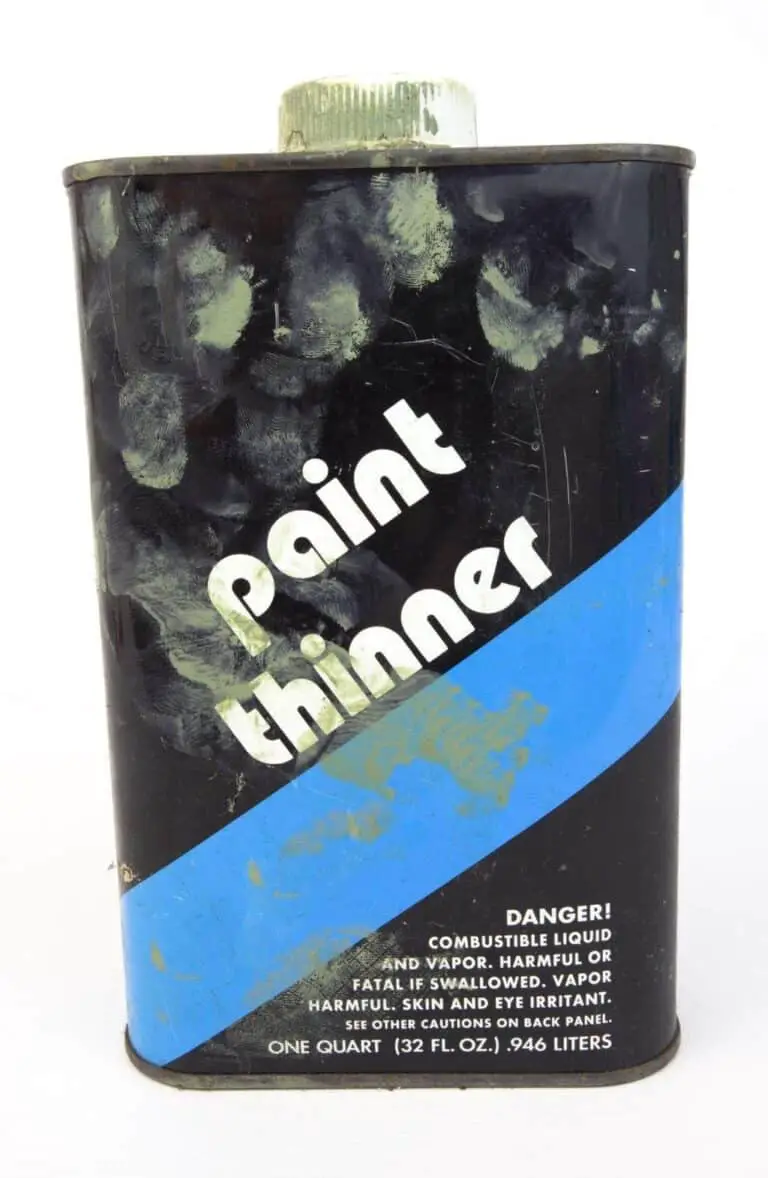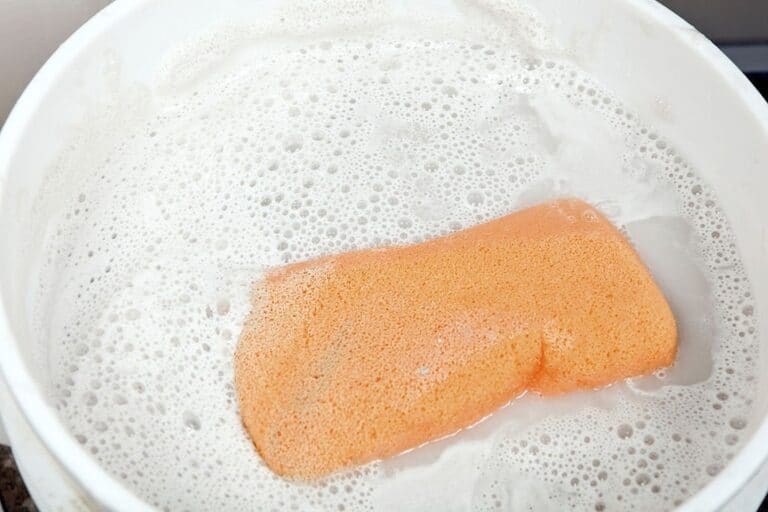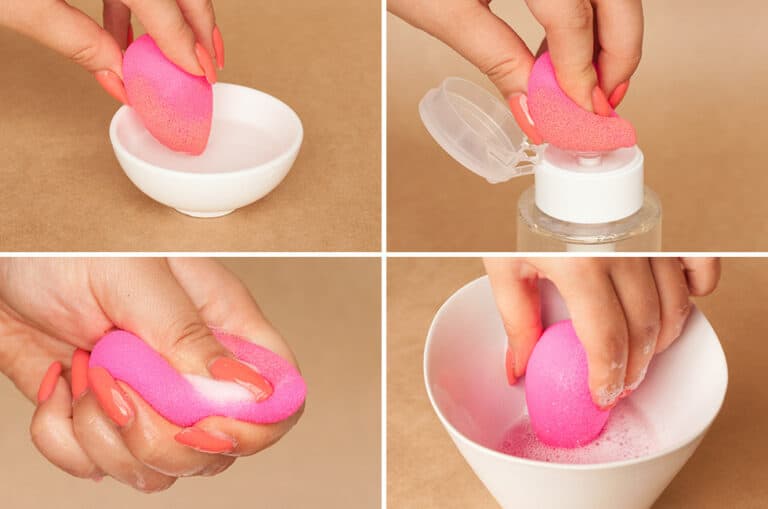Can You Put Sponges in the Dishwasher? (Washing & Cleaning)
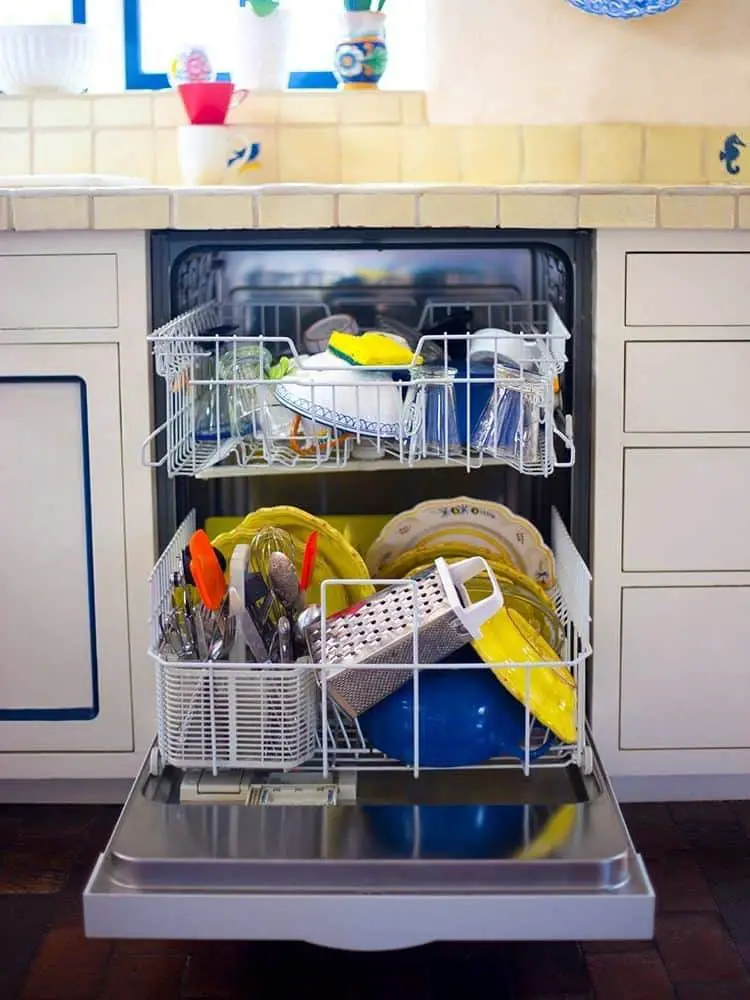
If you’re like most people, you probably use kitchen sponges to clean your dishes. But did you know that these sponges can be really dirty?
Many studies have pointed out that sponges aren’t the cleanest thing in the kitchen. Dishwashing sponges can be a major source of bacteria and germs. In fact, one study found that 90% of dishwashing sponges contain bacteria. The types of bacteria found in sponges can include E. coli, Salmonella, and Listeria.
So you want to clean them up. However, you may not realize that the usual steps of cleaning dishes are not good for sanitization. In fact, cleaning it the wrong way may spread the germs further to other kitchen utensils.
Another regular thing you do with your kitchen sponge may be in fact, the dirtiest thing you may do in terms of keeping things clean. Do you throw the sponge in a pool at the bottom of the sink after cleaning your dishes?
This method, as opposed to wringing and ensuring appropriate drying on a dish rack, contains the highest bacteria population for a given area, which might be harmful to the health of anybody who eats from a sponge-cleaned plate.
When it comes to cleaning sponges, there are several methods available. Can you put sponges in the dishwasher to clean it? Is it safe?
Yes, putting a sponge in the dishwasher is totally safe. In fact, the USDA recommends using the dishwasher as one technique for cleaning sponges. When run at the longest hottest cycle and dried, it eliminates about 99.998 percent of bacteria.
Put sponges in the top rack of the dishwasher and use the longest, hottest cycle setting to clean them. This will kill most of the microorganisms living inside the sponge’s cervices. Alternatively, a typical dishwasher heat-dry cycle is adequate to obtain similar cleaning results.
How Dirty Are Dishwashing Sponges?
A study by the University of Arizona found that dishwashing sponges are some of the dirtiest items in the kitchen, with bacteria levels that can cause food poisoning. The study also found that dishwashing sponges can be more than 100 times dirtier than a toilet seat.
Bacteria can thrive on sponges because they are often wet and dark, providing the ideal breeding environment for germs. Sponges provide a good source of nutrients like food residue and grease. Bacteria can multiply quickly on sponges, so it is important to clean them regularly.
How to Clean a Sponge in the Dishwasher
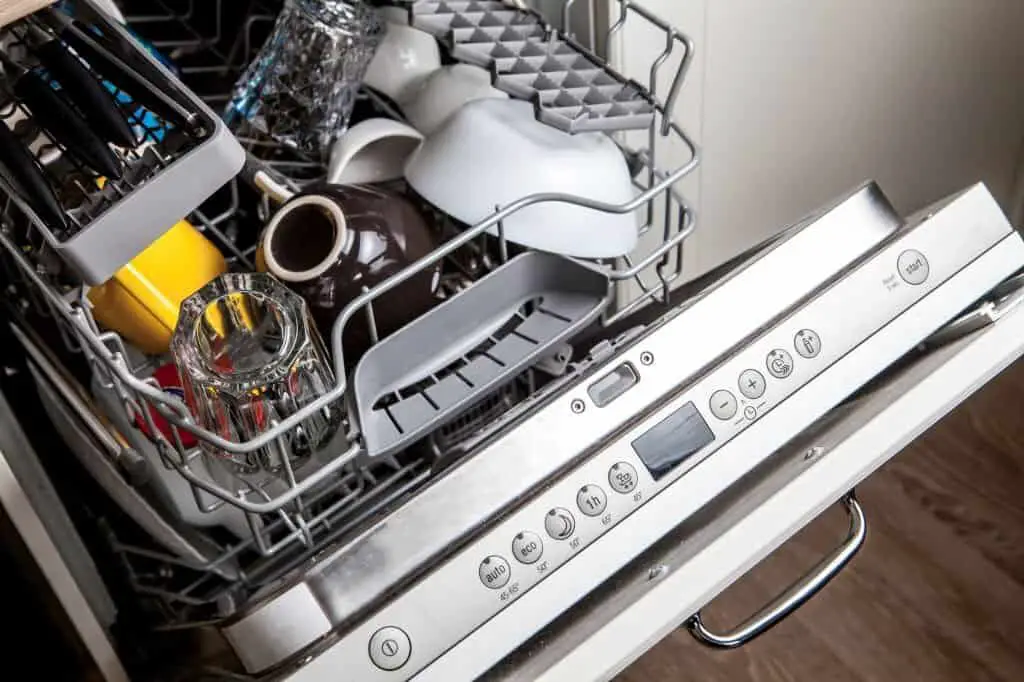
- Before Put into Dishwasher (Pre-cleaning)
First, make sure that the sponge can be placed in the dishwasher. Some sponges have a metal mesh on them that cannot go in the dishwasher. If the sponge has this type of mesh, then it needs to be removed before putting it in the dishwasher.
Remove any food residue from the sponge before running it under water. After that, squeeze out the remaining liquid from inside the sponges.
This not only cleans the sponge but will remove the majority of the soap inside. Without this, the dishwasher may accumulate suds, lowering the quality of the wash.
- Put Sponges on the Top Rack
Put the sponge in a mesh bag or place it on top of a silverware basket so that it will not fall through the cracks and get caught in the drainage area.
The top of the rack is the ideal place for the ideal temperature to avoid destroying the sponge fibers. In case you were wondering, the lower rack receives hotter water than the top rack. You don’t want your kitchen sponge to be ruined by the hot water.
- Run Long Hot Cycle
Most of the bacteria in the sponge will be killed by prolonged exposure to hot water. Alternatively, the regular cycle with drying should result in a reasonable cleaning outcome as well.
- Keep in a Dry Place
Place the sponge on a sponge tray or dish rack after cleaning in the dishwasher. It eliminates any moisture that the dishwasher did not remove. This keeps the sponge dry, making it an undesirable environment for bacterial growth.
- Clean Sponges on a Regular Basis
When it comes to cleaning a sponge, it’s preferable to do it anytime you run the dishwasher. That happens every day! It will prevent food contamination by keeping the sponge clean in between uses.
Use many different sponges for different purposes. Avoid using clean sponges in moist areas and refrain from using sponges to clean surfaces used to handle meat. For these surfaces, use disposable paper.
Can Sponges Survive a Dishwasher Cycle?
A dishwasher is a great way to clean dishes, but can sponges survive a dishwasher cycle? The answer is yes, but there are a few things you need to know. Sponges can survive a dishwasher cycle if they are rinsed off before being put in the dishwasher. Clean the sponge under water before using it to get rid of any food residue. Then, squeeze out any residual moisture from the sponges.
If the sponge is still dirty after being used, it will not be effective at cleaning dishes and should be replaced.
Other Methods for Cleaning Sponges
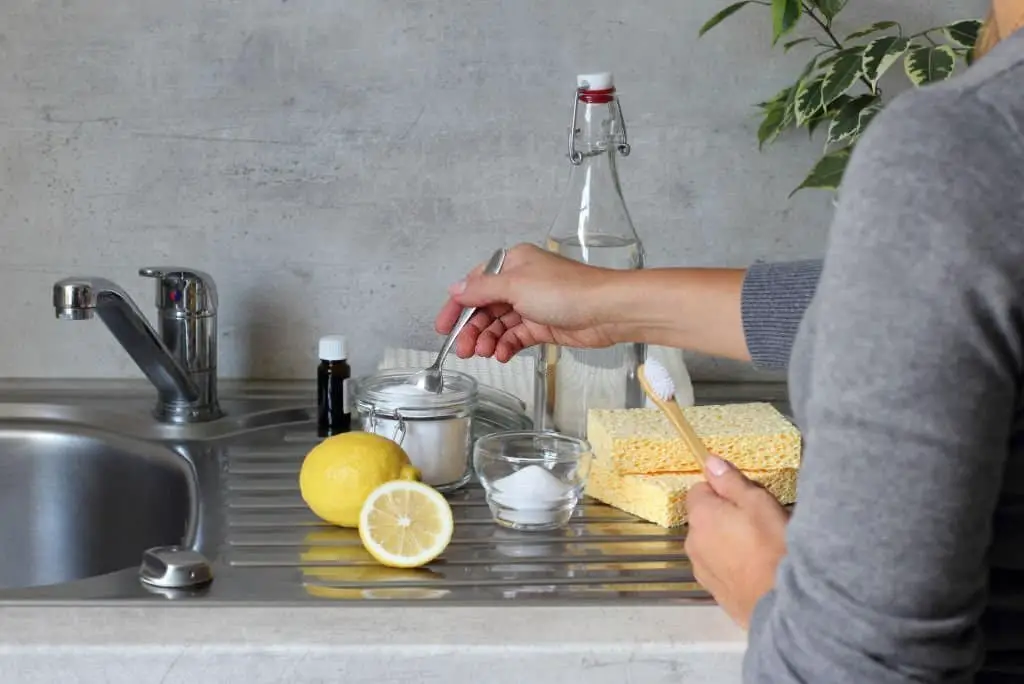
If you don’t have a dishwasher or are not keen on cleaning sponges in a dishwasher, you have a few other choices.
Here are the three other methods to clean kitchen sponges.
- Cleaning Sponges Using Microwave
There is a way to clean your sponges without using any harsh chemicals or spending a lot of money. All you need is a microwave!
Just place the wet sponges in a microwave-safe bowl and zap them for about 30 seconds. The heat will kill any bacteria or mold, and the sponges will be clean and ready to use.
This method is fast, easy, and environmentally friendly. It’s also a great way to sanitize your sponges if you are using them in the kitchen.
But please pay attention! A synthetic dry sponge can catch fire in the microwave if it is heated for too long. The sponge will start to smoke, and then it will burst into flames. If this happens, turn off the microwave and leave the door closed until the fire goes out.
- Cleaning Sponges Using Bleach
Many experts say that the bleach method is the best way to clean a sponge, even though they still say that its effectiveness is the same as that of a microwave, which is 99.99 percent. The bleach, which naturally possesses antibacterial qualities, is most likely the explanation.
Cleaning the sponge using the bleach method requires soaking the sponge for at least 5 minutes in a bleach solution. Then you should pull it out and thoroughly clean it. It is advised to use three-quarters of a cup of bleach per gallon of water.
- Cleaning Sponges Using Baking Soda
Another way to clean sponges is to sprinkle baking soda over them and add a little hot water. Let the sponges soak in the baking soda and water mixture for about 15 minutes, then rinse them off with warm water. Squeeze out the excess water and hang them to dry.
- 4. Cleaning Sponges Using Lemon Juice/Essentials Oil
If you do not have a microwave or dishwasher, you can also boil your kitchen sponge in water containing lemon juice or lemon essential oils. You don’t need much lemon essential oil because it is very strong and like a concentrated lemon.
Simply put the dish sponge in the boiling water, add around two or three drops of lemon essential oil, and allow it to boil for at least one minute while keeping a watch on it. To carefully place the dish sponge in the boiling water and remove it, use tongs.
When to Throw Away Your Sponge?
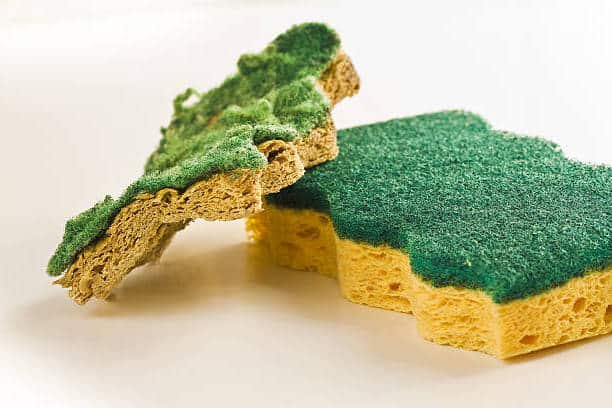
Sponges are one of the most commonly used kitchen tools, but when do you know it’s time to throw them away? Here are a few guidelines:
Final Thoughts
Many studies have shown that sponges may become quite unclean between normal sponge cleanings using soapy water. The suggested method for disinfecting sponges is to place them in the dishwasher. The heat from the water kills and destroys the germs in the sponge crevices 99.9998% of the time, making it safe to use again for cleaning your dinnerware and other things.
When putting sponges in dishwashers, make sure to put them on the top rack to avoid heat damage. Run the longest, hottest cycle to turn up the heat. Remember that the hotter the water, the simpler it is to kill harmful bacteria.

